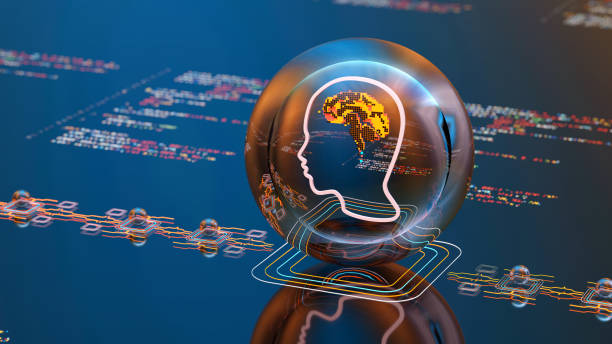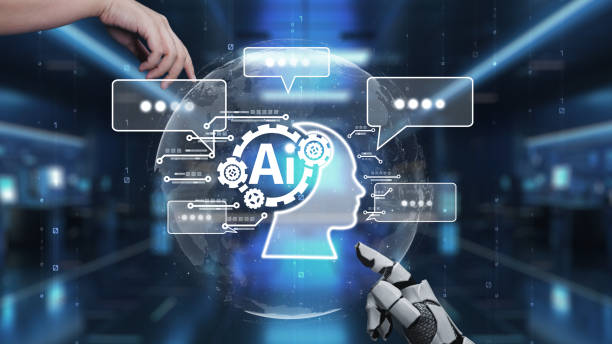What is an Artificial Intelligence Robot? A Comprehensive Definition and Types
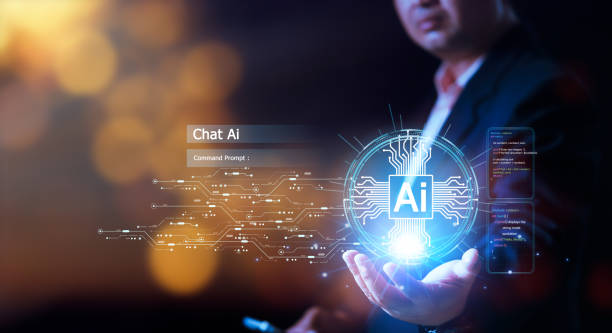
An artificial intelligence robot is a combination of two important fields: #robotics and #artificial_intelligence.
In short, an artificial intelligence robot is a physical or virtual machine that, using artificial intelligence algorithms, is capable of performing tasks that typically require human intelligence.
These tasks can include learning, reasoning, problem-solving, pattern recognition, and natural language understanding.
In simple terms, an artificial intelligence robot can collect information from its surrounding environment through sensors, process this information, and make decisions and act based on it.
The main difference between traditional robots and artificial intelligence robots is that traditional robots are usually programmed to perform pre-determined and repetitive tasks, while artificial intelligence robots can learn, adapt to new conditions, and make independent decisions.
There are different types of artificial intelligence robots, including industrial robots used in factories to perform manufacturing tasks, service robots that provide services in hospitals, hotels, and stores, search and rescue robots that help humans in dangerous situations, and educational robots that are used for education and entertainment.
Also, software robots or chatbots are also a type of artificial intelligence robot that provides services and answers users’ questions in cyberspace.
Using artificial intelligence helps robots to perform well in complex and unpredictable environments.
Did you know that your company’s website is the first point of contact for 75% of potential customers?
Your website is the face of your brand. With **Rasaweb’s** corporate website design services, create an online presence that earns customer trust.
✅ Creating a professional and lasting image of your brand
✅ Attracting target customers and increasing online credibility
⚡ Get free advice from **Rasaweb** experts!
Main Components of an Artificial Intelligence Robot
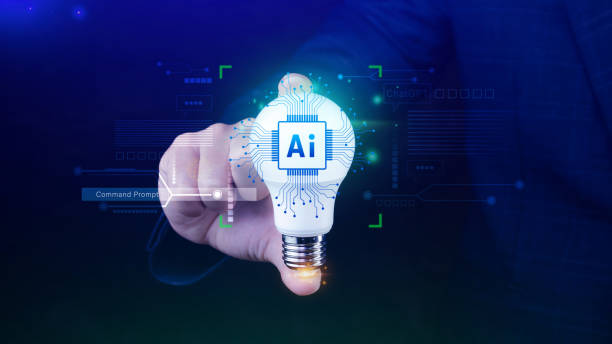
An artificial intelligence robot consists of several main components that work together to enable the performance of various tasks.
These components include:
Sensors Sensors are responsible for collecting information from the surrounding environment.
This information can include images, sounds, temperature, pressure, and location.
The type of sensors used in an artificial intelligence robot depends on the type of tasks that the robot must perform.
For example, a visual robot may use cameras to collect images, while a mobile robot may use distance sensors to avoid colliding with obstacles.
Processor The processor is responsible for processing the information collected by the sensors and deciding how to act.
The processor is usually a computer that is programmed with artificial intelligence algorithms.
These algorithms allow the robot to learn, reason, and make independent decisions.
Actuators Actuators are responsible for performing physical actions.
These actions can include movement, grasping objects, and speaking.
The type of actuators used in an artificial intelligence robot depends on the type of tasks that the robot must perform.
For example, an industrial robot may use robotic arms to perform manufacturing tasks, while a speaking robot may use speakers to produce sound.
Power source The power source is responsible for providing the energy needed for the robot to function.
The power source can include batteries, AC power supplies, and fuel cells.
The type of power source used in an artificial intelligence robot depends on the size and weight of the robot, as well as the amount of energy required for its operation.
An advanced artificial intelligence robot requires intelligent energy management to be able to continue working continuously and without interruption.
Key Algorithms in Artificial Intelligence Robots
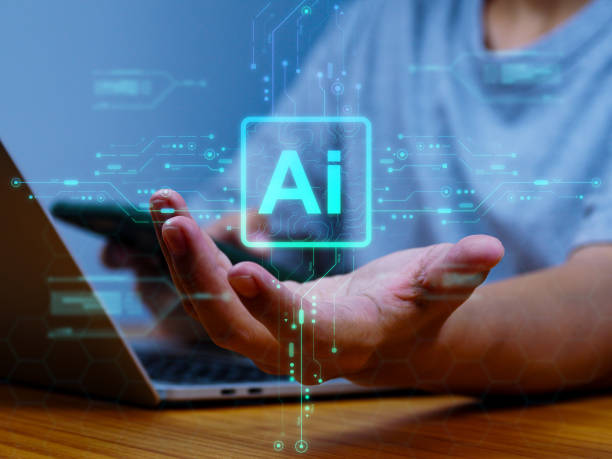
Artificial intelligence algorithms play a fundamental role in the operation of an artificial intelligence robot.
These algorithms allow the robot to learn, reason, and make independent decisions.
Some of the key algorithms used in artificial intelligence robots include:
Machine Learning Machine Learning allows the robot to learn from data and improve its performance.
There are different types of machine learning algorithms, including supervised learning, unsupervised learning, and reinforcement learning.
Natural Language Processing Natural Language Processing allows the robot to understand human language and communicate naturally with humans.
These algorithms are essential for the development of chatbots, voice assistants, and other language-based applications.
Computer Vision Computer Vision allows the robot to see and interpret images.
These algorithms are essential for the development of vision robots, face recognition systems, and other image-based applications.
Planning and Decision Making Planning and decision-making algorithms allow the robot to plan and make optimal decisions.
These algorithms are essential for the development of autonomous robots, traffic control systems, and other complex applications.
Using advanced algorithms allows the artificial intelligence robot to operate with high accuracy and speed.
Below is a table of types of machine learning algorithms and their applications in robotics:
| Algorithm Type | Application in Robotics |
|---|---|
| Supervised Learning | Object recognition, data classification |
| Unsupervised Learning | Data clustering, dimensionality reduction |
| Reinforcement Learning | Robot control, path planning |
Applications of Artificial Intelligence Robots in Various Industries
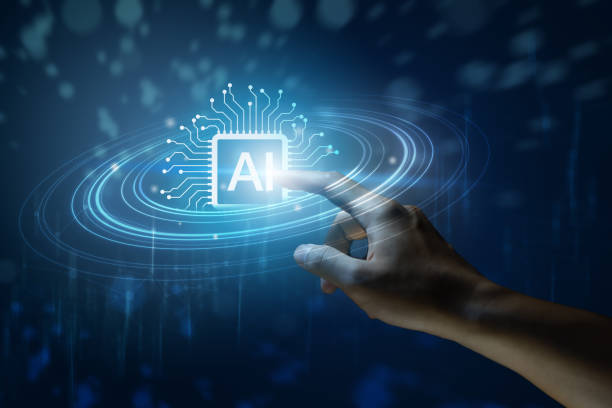
Artificial intelligence robots have extensive applications in various industries.
This technology helps to improve productivity, reduce costs, and increase safety.
Some of the important applications of artificial intelligence robots in various industries include:
Manufacturing In the manufacturing industry, artificial intelligence robots are used to perform repetitive and dangerous tasks, such as welding, painting, and assembling parts.
These robots can work with high accuracy and speed and help reduce human errors.
Healthcare In the healthcare industry, artificial intelligence robots are used to perform precise surgeries, provide nursing services, and assist with patient rehabilitation.
These robots can help doctors and nurses perform difficult and time-consuming tasks.
Transportation In the transportation industry, artificial intelligence robots are used to develop self-driving cars, traffic management systems, and delivery robots.
These robots can help reduce accidents, improve traffic flow, and reduce transportation costs.
Services In the service industry, artificial intelligence robots are used to provide services to customers, answer questions, and perform administrative tasks.
These robots can help improve customer satisfaction, reduce labor costs, and increase productivity.
The use of artificial intelligence robots in various industries demonstrates the high potential of this technology to improve processes and increase efficiency.
Does your company’s website create a professional and lasting first impression on potential customers? Rasaweb, with professional corporate website design, not only represents the credibility of your brand but also opens a path for the growth of your business.
✅ Create a powerful and reliable brand image
✅ Attract target customers and increase sales
⚡ Get free consultation
Advantages and Disadvantages of Using Artificial Intelligence Robots
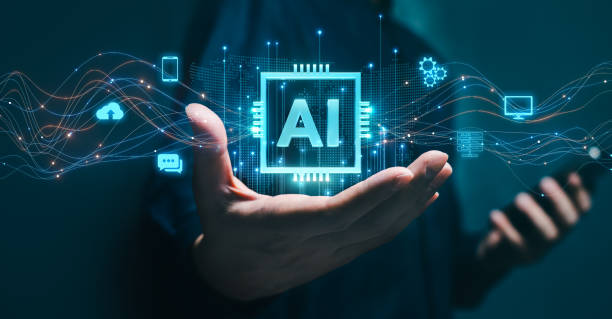
The use of artificial intelligence robots has its own advantages and disadvantages.
Awareness of these advantages and disadvantages helps organizations and individuals make more informed decisions about the use of this technology.
Advantages Increased productivity and reduced costs, improved accuracy and quality, increased safety, performing difficult and dangerous tasks, providing 24-hour service, and improving customer satisfaction are among the advantages of using artificial intelligence robots.
Robots can work continuously and without fatigue and help reduce human errors.
The use of artificial intelligence robots can help improve the quality of life for humans.
Disadvantages High development and deployment costs, the need for technical expertise, ethical and social concerns, the possibility of job loss, and dependence on technology are among the disadvantages of using artificial intelligence robots.
Robots may not be able to function well in unexpected situations and require human supervision.
Attention to ethical and social issues in the development and use of artificial intelligence robots is very important.
Deciding on the use of artificial intelligence robots requires a careful examination of its advantages and disadvantages in each specific case.
Artificial intelligence robots are a powerful tool that can help improve human lives, but they must be used with caution and responsibility.
The Future of Artificial Intelligence Robots
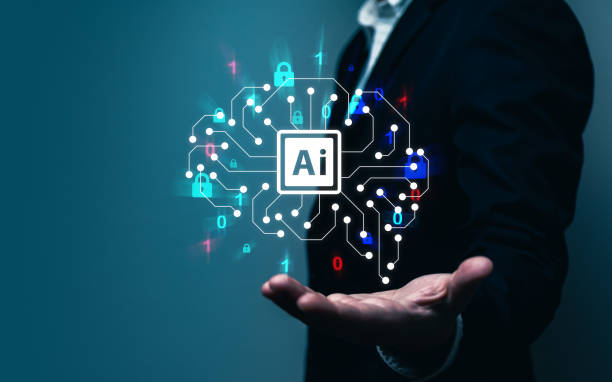
The future of artificial intelligence robots is very bright and full of potential.
With continuous advances in the field of artificial intelligence and robotics, it is expected that robots will play a more important role in our lives in the future.
Some of the key trends in the future of artificial intelligence robots include:
Increased Autonomy Robots in the future will be able to perform more complex tasks without the need for human supervision.
This will lead to the development of autonomous robots in various fields, including self-driving cars and search and rescue robots.
Improved Human-Robot Interaction Robots in the future will be able to interact with humans more naturally and effectively.
This will lead to the development of collaborative robots, smart personal assistants, and educational robots.
Expansion of Applications Robots will be used in more fields in the future.
This will lead to the development of medical robots, agricultural robots, and space robots.
Development of Software Robots Software robots or chatbots will play a more important role in providing services and answering users’ questions in the future.
This will lead to the development of smart chatbots, virtual assistants, and automated response systems.
Artificial intelligence robots are rapidly evolving, and it is expected that we will see more innovations in this field in the near future.
Challenges Facing the Development of Artificial Intelligence Robots
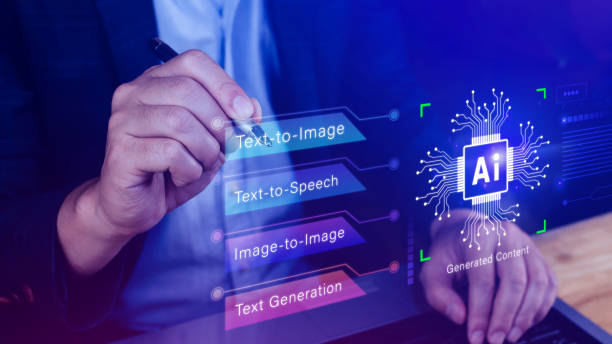
The development of artificial intelligence robots faces several challenges.
Overcoming these challenges is essential to realizing the full potential of this technology.
Some of the important challenges include:
Ethical Issues The use of artificial intelligence robots raises important ethical questions.
These questions include accountability, privacy, and discrimination.
It is necessary to pay attention to these issues in the development and use of artificial intelligence robots and provide appropriate solutions to address them.
Security Artificial intelligence robots can be vulnerable to cyber attacks.
Hackers can disable robots or use them for malicious purposes by infiltrating robot control systems.
It is necessary to design and implement strong security systems to protect robots from cyber attacks.
Legal Issues The use of artificial intelligence robots requires the development of new laws and regulations.
These laws and regulations should specify the rights and responsibilities of manufacturers, users, and victims of accidents caused by robots.
Public Acceptance Public acceptance of artificial intelligence robots may face resistance.
Some people may fear robots or worry about losing their jobs.
It is necessary to increase public awareness about the advantages and disadvantages of artificial intelligence robots through education and information and address concerns.
Artificial intelligence robots are a complex technology that requires collaboration between various experts, including engineers, scientists, lawyers, and ethicists.
The Impact of Artificial Intelligence Robots on the Labor Market

One of the main concerns about the development of artificial intelligence robots is their impact on the labor market.
Some people worry that robots will replace humans and cause job loss.
While these concerns are not unfounded, the reality is more complex than that.
Job Loss Robots can automate some jobs that are repetitive, dangerous, or require high accuracy.
This may lead to job loss in some industries.
Job Creation On the other hand, the development and deployment of robots can also create new jobs.
These jobs include robotics engineering, software development, robot maintenance and repair, and robotics training and consulting.
Changing the Nature of Jobs In addition, robots can change the nature of some jobs.
In some cases, robots can assist humans in performing tasks, leading to increased productivity and improved quality of work.
Training and Adaptation In order for humans to compete with robots in the future world of work, it is necessary to learn new skills and adapt to new conditions.
These skills include technical skills, problem-solving skills, communication skills, and creative skills.
Artificial intelligence robots create new opportunities and challenges for humans by creating changes in the labor market.
Governments, organizations, and individuals must work together to manage these changes and take advantage of new opportunities.
| Job Type | Impact of Artificial Intelligence Robots |
|---|---|
| Repetitive and Manual Jobs | Probability of job loss |
| Technical and Specialized Jobs | Creation of new job opportunities |
| Management and Creative Jobs | Changing the nature of jobs |
Is your online store ready to attract maximum customers and sell more? Rasaweb transforms your online business with modern and efficient online store designs.
✅ Increase speed and improve SEO
✅ Excellent user experience on mobile and desktop⚡ Get a free consultation on online store design from Rasaweb!
Artificial Intelligence Robots in Iran: Current Status and Outlook

The robotics and artificial intelligence industry in Iran is also growing and developing.
Despite the existing challenges, Iranian researchers, companies, and universities are working to develop indigenous technologies in this field.
Research and Development In Iran, research and development in the field of artificial intelligence robots is carried out in various universities and research centers.
This research includes the development of new artificial intelligence algorithms, the design and construction of various robots, and the application of robots in various industries.
Industry Iranian companies are also developing and manufacturing various robots.
These robots include industrial robots, service robots, and educational robots.
Challenges The robotics and artificial intelligence industry in Iran faces several challenges.
These challenges include a lack of financial resources, a shortage of experts, and limited access to advanced technologies.
Outlook Despite the existing challenges, the outlook for the robotics and artificial intelligence industry in Iran is bright.
With more investment in this area and support for Iranian companies and researchers, it can be expected that we will see significant progress in this industry in the near future.
The use of artificial intelligence robots in Iran can help develop various industries, improve the quality of life, and increase the country’s competitiveness at the international level.
Key Points for Selecting and Using Artificial Intelligence Robots

Selecting and using artificial intelligence robots requires a careful examination of the specific needs and conditions of each organization or individual.
Here are some key points for selecting and using artificial intelligence robots:
Define Needs First of all, you must accurately define your needs.
What tasks do you want to assign to the robot? What goals do you want to achieve using the robot?
Examine Options After defining your needs, you should examine the various options.
What types of robots are on the market? Which robots are compatible with your needs?
Evaluate Costs Evaluate the costs of developing, deploying, maintaining, and training the robot.
Is the use of the robot economically viable?
Training and Support Get proper training and support from the robot supplier.
How can you use the robot properly? How can you get help if there is a problem?
Ethical and Security Issues Pay attention to ethical and security issues.
How can you use the robot responsibly and safely? The use of artificial intelligence robots can help improve productivity, reduce costs, and increase safety, but it should be done with care and planning.
Paying attention to the key points mentioned in this article will help you make more informed decisions about selecting and using artificial intelligence robots and benefit from their advantages.
Frequently Asked Questions
| Row | Question | Answer |
|---|---|---|
| 1 | What is an Artificial Intelligence Robot? | An artificial intelligence robot is a machine that is capable of understanding, reasoning, learning, and solving problems and can perform complex tasks with relative autonomy. |
| 2 | What are the most important applications of artificial intelligence robots? | The main applications include industrial manufacturing, customer service (chatbots), medicine and surgery, autonomous transportation, space exploration, and military affairs. |
| 3 | What is the main difference between an artificial intelligence robot and a regular robot? | A regular robot only follows programmed instructions, while an artificial intelligence robot can learn from data, make decisions, and adapt to new environments. |
| 4 | How do artificial intelligence robots learn? | They identify patterns and improve their performance through machine learning algorithms (such as deep learning, reinforcement learning) and processing vast amounts of data. |
| 5 | Can artificial intelligence robots have emotions? | Currently, artificial intelligence robots do not have real emotions in the human sense. They can mimic or recognize emotions, but they do not understand and experience them. |
| 6 | What are the current limitations of artificial intelligence robots? | Limitations include the need for large amounts of data, the inability to understand abstract concepts, the lack of real creativity, ethical issues, and the challenges of generalizability in new environments. |
| 7 | What is the role of artificial intelligence in the development of Humanoid robots? | Artificial intelligence helps humanoid robots to walk, maintain their balance, understand the surrounding environment, interact with humans, and perform complex tasks. |
| 8 | How is the future of artificial intelligence robots predicted? | It is predicted that artificial intelligence robots will become smarter, more autonomous, and capable of performing more complex tasks in everyday life and industry, and their interaction with humans will increase. |
| 9 | Can artificial intelligence robots replace all human jobs? | It is unlikely that all human jobs will be replaced. Robots take over many repetitive and dangerous tasks, but jobs that require creativity, empathy, and ethical judgment will remain. |
| 10 | What ethical and social challenges are raised with the expansion of artificial intelligence robots? | The challenges include issues related to privacy, data security, ethical decision-making by robots, the impact on employment, and accountability in the event of an error. |
And other services of Rasa Web advertising agency in the field of advertising
Smart marketing automation: A creative platform to improve sales growth with marketing automation.
Smart sales automation: Professional optimization to increase sales using attractive user interface design.
Smart brand identity: A creative platform to improve website visits with attractive user interface design.
Smart sales automation: An effective tool to increase click-through rates by using real data.
Smart content strategy: Designed for businesses that seek to attract customers by customizing the user experience.
And over hundreds of other services in the field of internet advertising, advertising consulting, and organizational solutions
Internet Advertising | Advertising Strategy | Advertorial Report
Resources
What is a smart robot and how does it work?
,Iran is following intelligence
,What is Artificial Intelligence?
,The trend of producing smart robots in Iran
? In today’s competitive world, a strong online presence is key to success. Rasaweb Afarin Digital Marketing Agency takes your business to the top by offering comprehensive services including fast website design, SEO and social media management. Contact us today for a free consultation and to learn more about our services. 021-91097325
📍 Tehran, Mirdamad Street, next to the Central Bank, Kazerun Jonoubi Alley, Ramin Alley, No. 6

